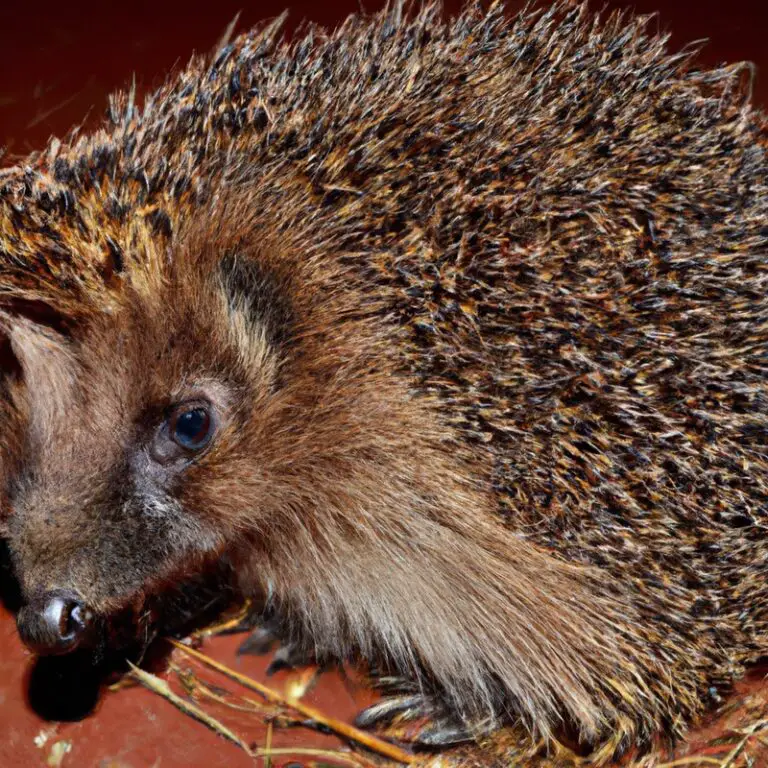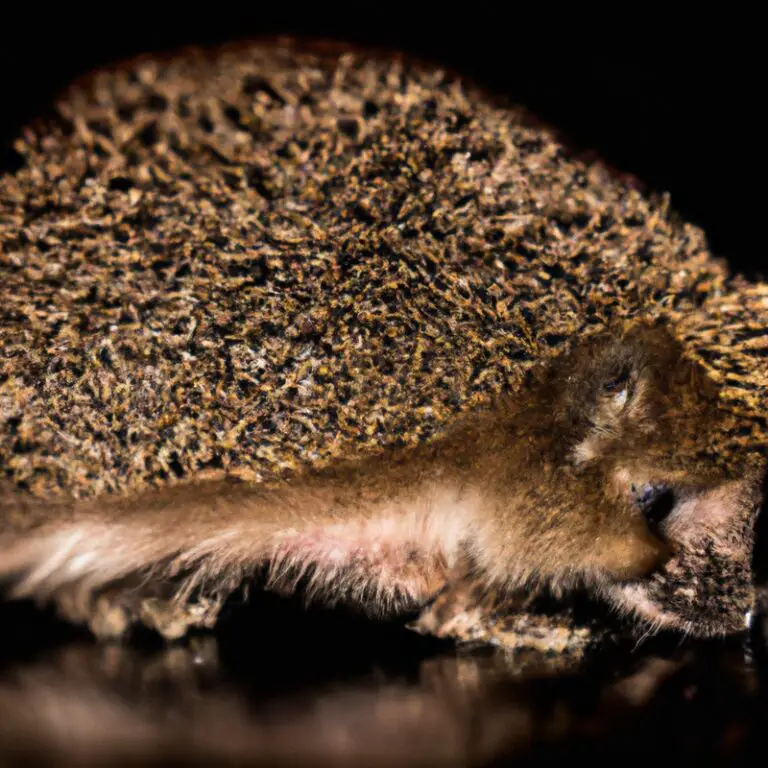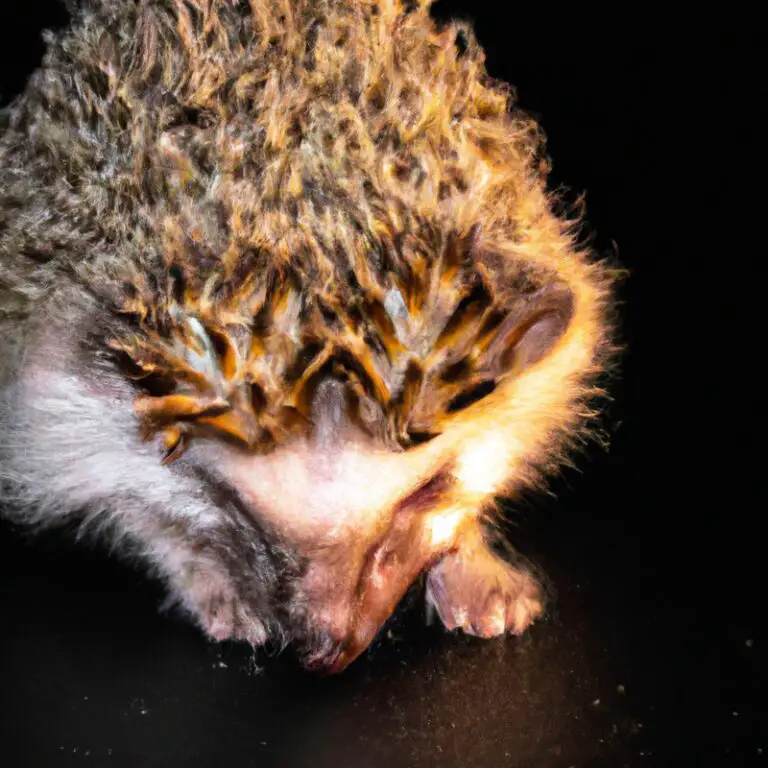What Is The Hedgehog’s Role In Traditional Medicine?
Key Takeaways:
- Hedgehog has a significant role in traditional medicine across cultures.
- Different parts of hedgehog are used for treating various ailments.
- Hedgehog-derived products are believed to possess medicinal properties.
- Research is required to validate the effectiveness and safety of hedgehog-based traditional treatments.
Do you ever wonder about the secrets of traditional medicine?
Ancient civilizations had a deep understanding of nature and its healing properties.
And here’s a little-known fact: hedgehogs played a crucial role in their remedies! Yes, these adorable creatures have a fascinating historical connection to traditional medicine.
In East Asian medicine, hedgehog products were used for anti-inflammatory purposes and to treat rheumatism and arthritis.
Meanwhile, in African folk medicine, hedgehog quills were worn as protective amulets, and hedgehog ingredients were infused in healing mixtures and potions.
But what about the ethics and conservation efforts surrounding hedgehog use?
And what does modern research tell us about the therapeutic potential of these tiny mammals?
Let’s dive into the intriguing world of hedgehog-based remedies in traditional medicine.
| Hedgehog’s role in traditional medicine |
|---|
| Pros |
| Cons |
| Key uses |
| Precautions |
| Cautions |
Hedgehog-Based Remedies in Traditional Medicine
Traditional medicine has historically included the use of hedgehog-based remedies for various health conditions.
Hedgehog-Based Remedies in East Asian Medicine
In East Asian medicine, hedgehog-based remedies have been used for various purposes. Hedgehog spines are believed to have medicinal properties, particularly in relieving joint and muscle pain.
The spines are often ground into a powder or mixed with other ingredients to create ointments or herbal remedies.
Additionally, hedgehog blood and organs are sometimes used in traditional remedies for treating fertility issues and enhancing vitality. These remedies are rooted in ancient beliefs and practices, and are still used by some practitioners today.
Hedgehog Spines and Their Uses
Hedgehog spines are used in traditional medicine for various purposes. They are believed to have pain-relieving properties and are often used as a remedy for arthritis and joint-related ailments.
The spines are also used for their antimicrobial properties, and they can be ground into a powder or infused into oils for use in topical treatments for wounds or skin infections.
Additionally, hedgehog spines are sometimes used as acupuncture needles in certain traditional practices. However, it is important to note that the use of hedgehog spines in traditional medicine is controversial and raises ethical concerns.

Hedgehog Products as Anti-inflammatory Agents
Hedgehog products have been utilized as anti-inflammatory agents in traditional medicine. They contain compounds that act as natural remedies for inflammation-related conditions.
Hedgehog oil, for instance, is extracted from the hedgehog’s skin and is known for its anti-inflammatory properties.
It can be applied topically to ease pain, reduce swelling, and promote faster healing. Another hedgehog product, the hedgehog bone powder, is believed to have anti-inflammatory effects when consumed orally.
These natural remedies have been used for generations and can offer potential benefits in managing inflammation.
Hedgehog-Based Remedies for Rheumatism and Arthritis
Hedgehog-based remedies have been used in traditional medicine for rheumatism and arthritis. These remedies often involve using hedgehog oil or extracts from hedgehog spines.
The oil is believed to have anti-inflammatory properties that can help reduce joint pain and inflammation.
Some traditional practitioners also believe that rubbing hedgehog spines on affected areas can provide relief. It’s important to note that scientific research on the effectiveness of hedgehog-based remedies for rheumatism and arthritis is limited, so it’s always best to consult with a healthcare professional before trying any alternative treatments.

Hedgehog-Based Remedies in African Folk Medicine
In African folk medicine, hedgehog-based remedies have been used for various purposes.
The quills of hedgehogs are believed to have medicinal properties and are often used to treat ailments such as rheumatism and arthritis.
Hedgehog oil is also believed to have healing properties and is used topically to treat skin conditions like eczema and wounds.
Additionally, hedgehog meat is sometimes consumed for its perceived health benefits.
While these remedies have been used for centuries, it’s important to note that scientific evidence supporting their effectiveness is limited.
Hedgehog Quills as Protective Amulets
Hedgehog quills have been used as protective amulets in traditional medicine practices.
These quills are believed to possess mystical properties that can ward off negative energy and protect the wearer from harm.
They are often worn as jewelry or carried in a small bag for personal protection.
The belief in hedgehog quills as protective amulets dates back centuries and is still upheld in some cultures today.
They are considered to bring luck and serve as a symbol of strength and resilience.
Hedgehog Products for Enhancing Fertility
Hedgehog products have been used in traditional medicine for centuries to enhance fertility. These products, such as hedgehog bone powder or hedgehog essence, are believed to have properties that promote reproductive health and increase the chances of conception.
Some people choose to incorporate hedgehog products into their fertility treatments or dietary routines, hoping for positive results.
While there may be anecdotal evidence suggesting their efficacy, it’s important to note that scientific research on the effectiveness of hedgehog products for enhancing fertility is limited. As always, it’s best to consult with a healthcare professional before trying any alternative remedies.
Hedgehog Ingredients in Healing Mixtures and Potions
Hedgehog ingredients have been used for centuries in various healing mixtures and potions.
Their spines, hair, and even internal organs are believed to possess medicinal properties.
Hedgehog oil, for example, is used topically to alleviate joint pain and skin conditions.
Hedgehog teeth are ground into powder and mixed with other herbs to create remedies for digestive issues.
While these traditional practices are intriguing, it’s important to note that the use of hedgehog ingredients in healing mixtures and potions is controversial and not supported by scientific evidence.
Ethical Concerns and Conservation Efforts
Concerns surrounding the ethical implications of hedgehog-based traditional medicine are driving conservation efforts to protect hedgehog populations.
Ethical Considerations in Hedgehog-Based Traditional Medicine
In hedgehog-based traditional medicine, there are several ethical considerations to keep in mind. One of the main concerns is the welfare and conservation of hedgehog populations.
Overharvesting of hedgehogs for medicinal purposes can lead to a decline in their numbers, negatively impacting their ecosystems.
Additionally, there are concerns about the welfare of the individual hedgehogs used in traditional medicine practices. It is crucial to ensure that these animals are sourced ethically and treated with care and respect.
Conservation efforts and regulations are necessary to balance the cultural significance of hedgehog-based medicine with the need to protect these unique creatures.
Animal Cruelty Concerns
Animal cruelty concerns arise due to the use of hedgehogs in traditional medicine.
These small creatures are often captured from the wild and subjected to inhumane treatment.
They may be kept in improper living conditions and harmed during the extraction of their body parts for medicinal purposes.
This mistreatment of hedgehogs goes against the principles of animal welfare and raises ethical questions.
Conservation efforts should prioritize protecting these animals from cruelty and educating people about the importance of their natural habitats.
Threats to Hedgehog Populations
Threats to Hedgehog Populations:
- Habitat loss: Destruction of hedgerows, urbanization, and farming practices contribute to the loss of natural habitat for hedgehogs.
- Fragmentation: The fragmentation of habitat due to roads, fences, and other barriers can disrupt hedgehog populations, making it difficult for them to find food and mates.
- Predation: Hedgehogs are vulnerable to predation by animals such as foxes, dogs, and badgers.
- Pesticides: The use of pesticides in agriculture can harm hedgehogs directly or indirectly by reducing their food sources, such as insects.
- Climate change: Changes in temperature and rainfall patterns can impact hedgehog food availability and hibernation cycles.
- Traffic accidents: Hedgehogs often suffer fatal injuries when trying to cross roads, leading to population decline.
It is important to address these threats and take steps to protect hedgehog populations by conserving their habitats, reducing pesticide use, and implementing measures to prevent road accidents.
Conservation Efforts to Protect Hedgehogs
Conservation efforts play a vital role in protecting hedgehogs and ensuring their survival.
Here are some key measures taken to safeguard these creatures:
- Creating wildlife-friendly habitats: Providing suitable environments, like unmanaged grassy areas and hedgerows, gives hedgehogs safe spaces to live, feed, and hibernate.
- Raising awareness: Educating the public about the importance of hedgehogs in ecosystems and promoting responsible behaviors, such as avoiding harmful pesticides and checking for hedgehogs in garden bonfires, helps reduce their risks.
- Establishing hedgehog rescue centers: These centers provide medical care, rehabilitation, and release programs for injured or orphaned hedgehogs.
- Encouraging citizen science initiatives: People can contribute to hedgehog conservation by participating in monitoring projects that collect data on hedgehog populations and behaviors.
Through these efforts, we can work together to protect hedgehogs and ensure they continue to thrive in our ecosystems.
Promoting Awareness and Education
To promote awareness and education about the hedgehog’s role in traditional medicine, it is important to take a proactive approach. Here are a few recommendations:
- Develop educational materials: Create informative brochures, articles, and fact sheets that explain the cultural significance of hedgehogs in traditional medicine. Distribute these materials in schools, community centers, and online platforms.
- Organize workshops and seminars: Conduct workshops and seminars to educate both the general public and healthcare professionals about alternative medicinal practices that do not involve the use of hedgehogs. These sessions can also address the potential negative impact on hedgehog populations.
- Engage with local communities: Collaborate with local communities to raise awareness about the importance of hedgehog conservation and the potential risks associated with their use in traditional medicine. This can be done through community events, awareness campaigns, and partnerships with local conservation organizations.
- Support research and studies: Encourage and fund scientific research on traditional medicinal practices involving hedgehogs. By gaining a better understanding of alternative remedies, we can provide evidence-based information to promote the use of safer, sustainable options.
- Encourage responsible practices: Advocate for the responsible use of traditional medicine by encouraging individuals to consult licensed healthcare professionals and to seek evidence-based treatments that are safe and environmentally friendly.
Remember, promoting awareness and education is key to shifting attitudes and behaviors towards the conservation of hedgehog populations and the preservation of their natural habitats.
Implementing Protective Measures and Legislation
Implementing protective measures and legislation is essential for safeguarding hedgehog populations and preventing their exploitation for traditional medicine. This can be achieved through strict regulations and enforcement to deter illegal trade and hunting.
Additionally, educating the public about the importance of hedgehogs in the ecosystem and promoting conservation efforts can help reduce their demand for traditional medicine.
Collaboration between governments, NGOs, and local communities is crucial in successfully implementing these measures and ensuring the long-term survival of hedgehogs.
Modern Understanding and Scientific Research on Hedgehog Medicine
Scientists have been exploring the active components in hedgehogs and their potential therapeutic applications through clinical trials and research studies. Integration of traditional and modern medicine is being considered to further understand and utilize the medicinal properties of hedgehogs.
Analysis of Active Components in Hedgehogs
Analysis of Active Components in Hedgehogs: Hedgehogs have been found to contain active compounds that hold therapeutic potential. These bioactive components include antimicrobial peptides, such as hedgehogins, which have shown effectiveness against bacteria and fungi.
Additionally, hedgehogs possess anti-inflammatory agents like quercetin and flavonoids, which may help in reducing inflammation in the body.
Studies have also revealed the presence of antioxidants like polyphenols and vitamins in hedgehogs, which contribute to their potential health benefits. Further research is needed to fully explore and understand the extent of these active components and their effects on human health.
Identification of Bioactive Compounds
Identification of bioactive compounds involves the analysis and characterization of chemical components found in hedgehogs that have medicinal properties. This process typically includes extracting the compounds from various parts of the hedgehog, such as the spines or organs, and analyzing them using techniques like chromatography and spectroscopy.
By identifying these bioactive compounds, researchers can gain insights into their potential therapeutic effects and further explore their applications in traditional medicine.
Potential Therapeutic Applications
Potential Therapeutic Applications Hedgehog medicine has been explored for its potential therapeutic applications in various areas.
Some of these include:
- Wound healing: Hedgehog proteins have shown promising results in enhancing wound healing processes by promoting cell growth and tissue repair.
- Bone regeneration: Studies have indicated that hedgehog signaling molecules play a crucial role in bone formation and regeneration, making them a potential target for the development of treatments for bone-related conditions.
- Cancer treatment: Hedgehog inhibitors have been used as a targeted therapy for certain types of cancer, inhibiting the growth and spread of tumor cells by blocking hedgehog signaling pathways.
- Neurodegenerative diseases: Research suggests that hedgehog proteins may have a role in protecting and repairing damaged nerve cells, indicating their potential use in the treatment of neurodegenerative disorders such as Alzheimer’s and Parkinson’s disease.
While these potential therapeutic applications hold promise, it is important to note that further research is still needed to fully understand the mechanisms and optimize the use of hedgehog-based treatments.
Clinical Trials and Research on Hedgehog Products
Clinical trials and research on hedgehog products are limited due to ethical considerations and the complex nature of studying traditional medicine.
However, some studies have explored the potential therapeutic effects of hedgehog products.
These studies have primarily focused on their anti-inflammatory, antioxidant, and wound healing properties.
Additionally, preliminary research suggests that hedgehog products may have potential in treating certain skin conditions and promoting hair growth.
Nonetheless, further research is needed to fully understand and establish the efficacy and safety of hedgehog products in clinical settings.
Efficacy and Safety Studies
Efficacy and safety studies are essential in determining the effectiveness and safety of using hedgehog-based treatments in traditional medicine.
These studies involve rigorous scientific research and testing to assess the potential benefits and risks associated with hedgehog medicine.
Researchers conduct experiments and analyze data to evaluate the efficacy of hedgehog treatments for specific ailments.
They also closely monitor the safety profile and potential side effects to ensure the well-being of individuals using these remedies.
The findings from these studies help guide healthcare professionals and policymakers in making informed decisions about the use of hedgehog medicine.
Integration of Traditional and Modern Medicine
Integration of Traditional and Modern Medicine involves combining the wisdom and practices of traditional medicine with the advancements and scientific research of modern medicine. This approach recognizes the strengths of both systems and aims to provide patients with a holistic and comprehensive healthcare experience.
By incorporating traditional remedies and therapies alongside modern diagnostics and treatments, patients can benefit from a more personalized and effective approach to their health and wellness.
This integration allows for a deeper understanding of the patient’s needs and aims to optimize their overall well-being.
FAQs About Hedgehog’s Role in Traditional Medicine
Are hedgehogs endangered due to their use in traditional medicine?
Yes, hedgehogs are indeed endangered due to their use in traditional medicine. The high demand for hedgehog products and their use in various traditional remedies has led to rampant hunting and illegal trade.
This has significantly depleted their populations in many areas, putting them at risk of extinction.
The poaching of hedgehogs for their supposed medicinal properties is a severe threat to their survival, and immediate action is needed to protect these adorable creatures.
Can hedgehog-based remedies be used in modern medicine?
Hedgehog-based remedies have shown potential in modern medicine. Some studies suggest that compounds found in hedgehog venom and quills may have antimicrobial and anti-inflammatory properties.
These properties could be beneficial in treating certain health conditions.
However, further research is needed to fully understand the effectiveness and safety of hedgehog-based remedies before they can be used in medical treatments.
What are the alternative and sustainable substitutes for hedgehog in traditional medicine?
Alternative and sustainable substitutes for hedgehog in traditional medicine are several plant-based ingredients that offer similar medicinal properties. These substitutes include turmeric, ginseng, ginger, and licorice root, which have been used for their anti-inflammatory, analgesic, and immune-boosting effects.
Additionally, certain mushrooms like reishi and cordyceps have been shown to possess potential therapeutic properties.
It’s important to consult with a qualified healthcare professional to determine the appropriate substitute for your specific health condition.
Final Verdict
The hedgehog has played a significant role in traditional medicine across different cultures and regions. In East Asian medicine, hedgehog spines have been used for various purposes, including as anti-inflammatory agents and remedies for rheumatism and arthritis.
In African folk medicine, hedgehog quills have been used as protective amulets, and hedgehog ingredients have been incorporated into healing mixtures and potions, as well as remedies for fertility.
However, these practices raise ethical concerns due to animal cruelty and potential threats to hedgehog populations. Conservation efforts are necessary to protect these creatures, while modern scientific research aims to identify the active components in hedgehogs and integrate traditional and modern medicine practices.
Alternative and sustainable substitutes must also be explored to preserve both the tradition and the hedgehog species.







